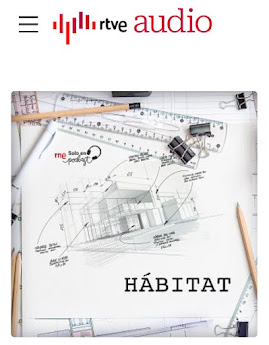Si bien hoy hasta la propia Biblia está siendo cancelada como lugar donde se describen atrocidades, latrocinios, incestos y cosas no menores - ni Dios se libra de la estupidez humana - la arquitectura permanece ante el mundo de la posverdad con una mudez insultante. Cuando la pintura de bodegones con chuletas y cadáveres de conejos se retira hoy ante la vista de comedores universitarios por resultar ofensiva para los veganos, ¿quién se siente interpelado por las obras erigidas en tiempos injustos por tiranos crueles y construidas sobre cadáveres?
Abandonadas en algún rincón las pancartas que antaño colgaban de sus fachadas con el rostro del dictador de turno, la arquitectura parece exenta de toda posible revisión desde el enfoque exclusivista de lo políticamente correcto. No derribamos las pirámides por mucho que sean un suculento terreno para el debate sobre la esclavitud o la explotación laboral. Al menos, porque su demolición ofendería a los ecologistas que verían en la montaña de escombros resultante un delito ambiental. Paradójicamente, solo un exiguo puñado de monumentos consigue ofender por su sola presencia. En este sentido, la escultura lo tiene más difícil.
Curiosamente, la cancelación del arquitecto es posible, pero no la de la obra que éste haya erigido. Su obra permanece sola y dando la cara ante el futuro. Con una existencia plena y autónoma. Lo cual debiera bajar los humos a todo arquitecto y a su ególatra sentido de autoría.
La arquitectura, como el bailarín, tiene razón, aunque esté equivocada. Por sí misma.
While even the Bible is being censored as a repository of accounts detailing atrocities, thefts, incest, and other grave matters - no one, not even God, escapes the folly of human idiocy - architecture remains, with its deafening silence, unscathed in the age of post-truth. While still-life paintings depicting meat and rabbit corpses are being removed from university cafeterias today to avoid offending vegans, who among us feels compelled to question the structures erected in unjust times by cruel tyrants, structures built upon a foundation of human suffering?
Once the banners featuring the dictator's face that once adorned their facades have been abandoned, architecture seems to be exempt from the scrutiny imposed by the politically correct. We don't demolish the pyramids, despite their potential connection to slavery or labor exploitation, mainly because such an act would be deemed an environmental crime by ecologists, who would see the resulting mountain of rubble as an offense against nature. Paradoxically, only a few monuments succeed in offending through their mere presence. In this sense, sculpture faces a greater challenge.
Interestingly, an architect's cancellation is conceivable, but their creations are not. The architecture stands alone, representing itself. It exists independently and fully towards the future. This should serve as a humbling reminder to architects and their egotistical sense of authorship.
Architecture, much like a dancer, can be right even when it appears wrong on its own terms.
























































































































